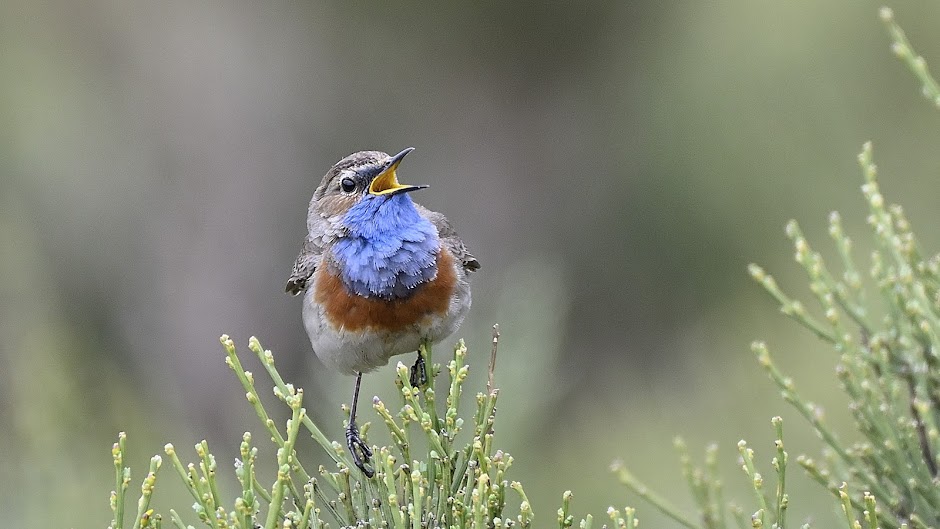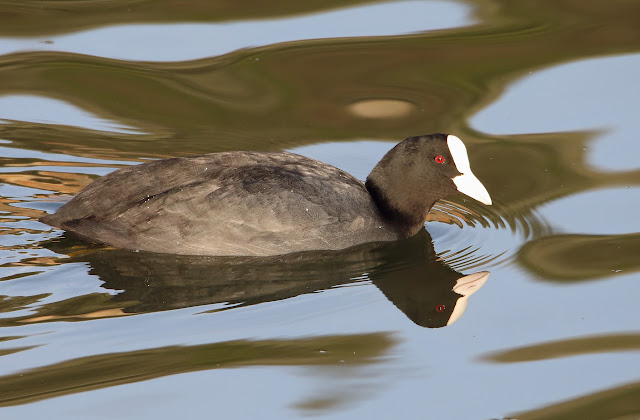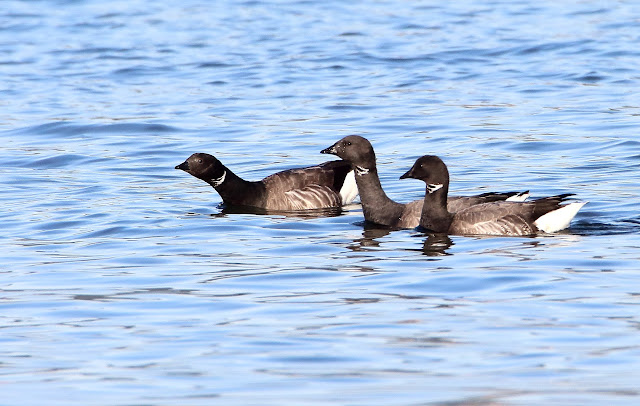Ola otra vez.
Hi again.
Como os comenté en mi anterior entrada esta es la segunda parte de nuestra visita al Parque Natural de las Marismas de Santoña, Victoria y Joyel.
As I said in my previous post this is the second part of our visit to the Natural Park of the Marshes of Santoña, Victoria and Joyel.
SEGUNDO DÍA HASTA EL ANOCHECER:
SECOND DAY UNTIL SUNSET:
Estornino pinto (Sturnus
vulgaris).
Common
Starling.
El pequeño e inquieto reyezuelo listado (Regulus
ignicapillus).
The small and restless Firecrest.
Verderón común (Carduelis
chloris).
Greenfinch.
Bisbita pratense (Anthus
pratensis).
Meadow
Pipit.
Gaviota sombría (Larus
fuscus).
Lesser
Black-backed Gull.
Gaviota patiamarilla (Larus
michahellis).
Yellow-legged
Gull.
Gaviota reidora (Chroicocephalus
ridibundus).
Black-headed
Gull.
Alca común (Alca
torda).
Razorbill.
Colimbo grande (Gavia
immer).
Great
Northern Diver.
Agujas colinegras (Limosa
limosa).
Black-tailed
Godwits.
Impresionante el numero de aves que se congregan en la pleamar.
Impressive the number of Birds that come together at high tide.
Zampullín común (Tachybaptus
ruficollis).
Little
Grebe.
Focha común (Fulica
atra).
Common
Coot.
Y de nuevo la tímida focha común (Fulica atra) con leucismo parcial.
And again the shy CommonCoot with partial leucism.
Cucharas comunes (Anas
clypeata). Dos machos y la última es una hembra.
Northern
Shovelers. Two males and the last one is a female.
Macho.
Male.
Y apareció el gavión hiperbóreo (Larus hyperboreus) de primer año que era unos de los objetivos prioritarios de éste viaje.
And it appeared the first year Glaucous Gull who was one of the priority goals of this trip.
Después de pasar un buen rato desalándose se marchó me imagino que en busca de su cena.
After staying for a while taking out salt of its feathers I guess it went out looking for its dinner.
Macho de ánade azulón (Anas
platyrhynchos).
Male of Mallard.
Pareja de cisnes mudos (Cygnus
olor).
A pair of Mute Swans.
Amenazantes pero preciosos.
Threatening but beautiful.
TERCER Y ÚLTIMO DÍA:
THIRD AND FINAL DAY:
Este día no comenzó nada mal pues encontramos a este adulto de halcón peregrino (Falco
peregrinus) disfrutando de su desayuno.
This day did not start too bad because we find this adult Peregrine Falcon enjoying breakfast.
Y uno más.
And one more.
Macho de gavilán común (Accipiter
nisus).
Male of Eurasian
Sparrowhawk.
Barnaclas carinegras (Branta
bernicla). Para mi fue el mejor momento de la excursión. La playa estaba llena de esta bonita especie y si respetabas la distancia de acercamiento las aves se comportaban como si no estuviéramos allí.
Brent geese (Branta bernicla). To me this was the best momment of the tour. The beach was full of this beautiful specie and if you respected the approach distance birds behaved as if we were not there.
Había bastantes jinetes por la playa. Al fondo las barnaclas carinegras ( Branta bernicla).
There were many riders along the beach. In the background Brent Geese.
Charrán pitinegro (Sterna
sandvicensis).
Sandwich
Tern.
Las uñas de gato (Carpobrotus edulis) estaban en flor. Es una planta invasora que es oriunda de Sudáfrica.
Hottentot-fig were in bloom. It is an invasive plant that is native to South Africa.
Ánsares comunes (Anser
anser).
Greylag
Geese.
Zampullines cuellirrojos (Podiceps
auritus).
Slavonian
Grebes.
Zarapito real (Numenius
arquata).
Eurasian
Curlew.
Zarapito trinador (Numenius
phaeopus).
Whimbrel.
Zampullín cuellinegro (Podiceps
nigricollis).
Black-necked
Grebe.
Águila pescadora (Pandion
haliaetus). Siento no poder mostraros una imagen mejor.
Osprey. Regret not being able to show you a better picture.
Chorlito gris (Pluvialis
squatarola).
Grey
Plover.
En la izquierda un archibebe común (Tringa
totanus), los más numerosos son correlimos comunes (Calidris
alpina) y en el centro un chorlito gris (Pluvialis squatarola).
On the left is a Common Redshank, the most numerous are Dunlins and in the center a Gray Plover.
Silbón europeo (Anas
penelope) macho.
Male of Eurasian
Wigeon.
Machos y hembras.
Males and females.
Un buen gruo.
A big flock.
Herrerillo común (Cyanistes
caeruleus).
Blue Tit.
En primer plano un macho de cerceta común (Anas
crecca).
In the foreground a male of Common Teal.
Otra vez el ejemplar de gaviota cáspica (Larus cachinnans) que habíamos visto el primer día.
Again the specimen of Caspian gull we had seen the first day.
Y para finalizar la crónica de este viaje os dejo con estas fotos de un grupo de cinco moritos comunes (Plegadis falcinellus).
And to end the post of this trip I leave you with these pictures of a group of five Glossy Ibises.
Hasta pronto.
See you soon.
















































































